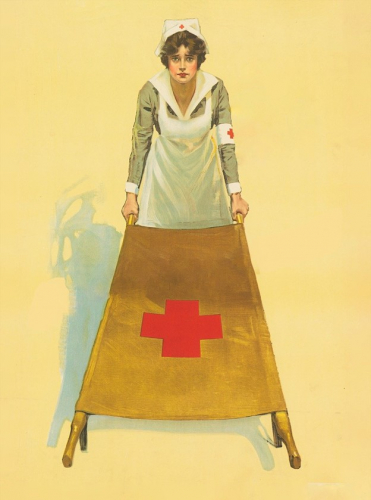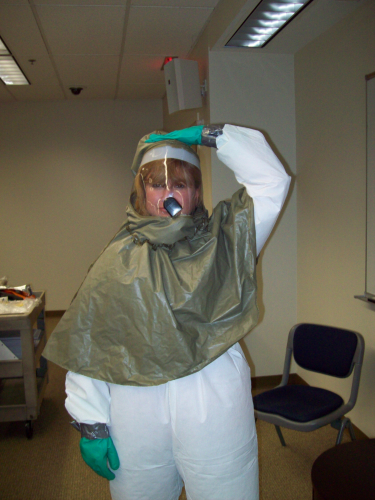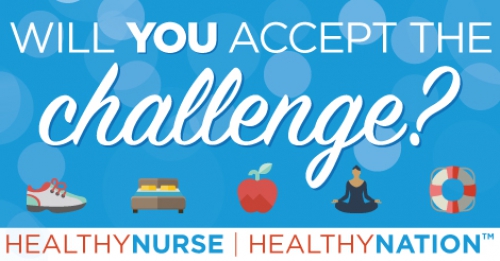ANA Healthy Nurse, Healthy Nation® Blog - American Nursing Through the Decades
Published
A Legacy of Adaptation and Advancement

Florence Nightingale is known as the founder of modern nursing. But in the 1850s, nursing was a far cry from what we know today. Nurses had only basic medical knowledge to care for the ill and injured — they had very little formal training. Thankfully, Nightingale's efforts kicked off a revolution for nursing. She introduced systematic training, emphasized cleanliness, and made nursing a more respected profession.
But that was just the beginning of change in the profession. 21st-century nursing looks drastically different thanks to advances in education and technology. From learning on the job to the formation of revered nursing education programs; from simple bedside care to the development of specializations like obstetrics, oncology, and hospice; nursing has come a long way.
Even the attire is different. "When I went to nursing school, I wore a plain, white uniform with a cap. That was how you knew who the nurses were," says Marilyn D. Harris, MSN, RN, NEA-BC, FAAN, a nurse with more than 7 decades of experience. “Today, patients will often say they don’t know who the nurse is. Everyone in the hospital just wears scrubs.”
 The Nursing Profession in the Early 20th Century (1900 – 1940)
The Nursing Profession in the Early 20th Century (1900 – 1940)After Nightingale’s pioneering efforts in Britain, the world became more turbulent in the early 1900s. Many major historical events — World War I, the Great Depression, and World War II — impacted the nursing profession.
Challenges:
- Nurses were forced to juggle multiple roles at home as well as on the job. At work, they had to act not only as caregivers, but also as administrators, educators, and advocates. They were responsible for comprehensive patient care — expected to administer medications, manage wound care, and offer emotional support to patients and families.
- Nurses were also taking leadership roles and establishing nursing standards and protocols.
- War brought an influx of wounded soldiers and severely limited the health care resources available. Nurses had to deliver quality care under extraordinarily difficult conditions.
- During World War I, demand for nurses skyrocketed. The government mandated that military nurses must be females, and more than 21,000 women answered the call.
- Back then, nursing education lacked the structured programs we have now. Aspiring nurses often learned through hands-on experience rather than formal schooling.
- Even though nursing was considered women’s work, societal norms and gender biases made it harder for women to pursue a career as a nurse. Females were expected to prioritize marriage and family over their professional dreams. Any kind of education and employment outside the home was typically frowned upon.
Changes:
- Thankfully, several influential, pioneering nurses advocated for higher educational standards. They helped pave the way for future generations of nurses to learn skills from quality nursing programs, which also positively impacted patient care.
- Many airlines started hiring stewardesses — and one of the job requirements was a nursing license. Airlines saw their medical training as an asset in caring for sick or frightened passengers. This requirement lasted until World War II, when the military’s need for nurses grew and the airlines could no longer hire enough of them.

Nursing Transformations in the Mid-20th Century (1940 – 1970)
The end of World War II brought some stabilization to the United States. This set the stage for many improvements to nursing education and the advancement of the profession itself. But it also brought about new challenges.
Challenges:
- There were nursing shortages — especially in rural areas and underserved communities — which led to increased workloads and burnout.
- There were discriminatory practices and gender biases, which limited opportunities for minority and male nurses.
- Health care systems were also becoming more complicated and more specialized, creating separate units or floors. They also started accepting health insurance.
Changes:
- Education improved significantly. Leaders founded more formalized training programs, and there was widespread adoption of bachelor's and master's degrees in nursing. This shift helped raise the profession's status, educate more individuals, and improve patient care outcomes.
- Nursing roles and specializations also evolved. Nurses could now focus on different areas of health care, such as pediatrics, obstetrics, oncology, and critical care.
- Advancements in technology meant nurses could step into new roles. They could deliver more complex care with technologies like ventilators, cardiac monitors, and dialysis machines.
 Evolving Practices in the Late 20th Century (1970 – 1999)
Evolving Practices in the Late 20th Century (1970 – 1999)As time went on, nurses and nursing students were exposed to even more technological advancements. These changes had positive effects, but it meant the job was different than in earlier years.
Marilyn witnessed some of these changes firsthand. "The shift to electronic medical records added a new layer of complexity to our work," she says. "We had to adapt quickly to changing technologies — without losing the compassionate side of nursing."
Challenges:
- Nurses had to learn how to use new, complicated medical tools and input patient charts into electronic records, which required additional training.
- Nursing was perceived as a challenging profession with limited financial compensation, making it a less desirable career path.
- The shortage of educated and experienced nurses continued throughout the country.
- While the Vietnam War prompted advancements in medical treatment and triage procedures, it also created intense pressure for nurses. They dealt with high patient volumes, severe injuries, and limited resources. Emotional and psychological stress soared as nurses cared for wounded soldiers during a contentious and divisive war.
- The AIDS epidemic challenged nurses to provide compassionate care to patients with a stigmatized illness. Nurses played a crucial role in educating the public about HIV/AIDS, advocating for patients' rights, and promoting prevention strategies.
Changes:
- Hospitals began paying nurses more in the late 1960s when Medicare and Medicaid were passed, and many nurses benefited financially from this legislation.
- New educational technologies like computerized simulations changed nursing education. These interactive, virtual scenarios simulated real-life clinical situations and provided a safe and risk-free way for students to get hands-on experience. They could improve their clinical competency before working with real patients. Nursing diploma programs became more scarce.
- In 1991, the Occupational Safety and Health Administration (OSHA) created the Bloodborne Pathogens standard to help keep health care workers, including nurses, safe from diseases like HIV and hepatitis B. This rule made it mandatory for nurses to wear protective gear, follow safe work practices, and get vaccinated. It was a major step in lowering the chances of nurses getting sick from infectious diseases.
- The Health Insurance Portability and Accountability Act (HIPAA) of 1996 set strict standards for how health care information is stored and shared. This legislation required nurses to learn and follow rigorous protocols to safeguard patient data, so sensitive details remained confidential and secure.
- As nurses continued to hone their skills in certain specialties, further education followed and opened up doors for advanced practice nursing fields, including:
- Nurse anesthetists
- Nurse practitioners
- Nurse informaticists
 Life as a 21st Century Nurse (2000 – Present)
Life as a 21st Century Nurse (2000 – Present)That brings us to today. Even in this modern age, nursing is still evolving. We’ve seen the rise of online learning platforms, new roles, and more advanced technology. Yet, there are new hurdles to overcome.
"Things have changed a lot from when I first became a home health nurse," says Marilyn. "Back then, you could get to know your patients. These days, nurses have to spend more time on the computer, and that’s one of the drawbacks to nursing now.”
Challenges:
- Patients are more informed than ever, and with multiple comorbidities and aging populations, their care needs are becoming more complex.
- The global COVID-19 pandemic brought surges in critical patients and a severe lack of PPE. Nurses suffered extreme stress, and many left their positions.
- The ongoing nurse staffing crisis puts strain on health care systems and the nurses working within them.
- Nurses are experiencing unprecedented levels of anxiety, stress, incivility, bullying, workplace violence, and burnout.
Changes:
- Nurses can be more efficient and have more flexibility with the invention of technology like predictive analytics for patient care or virtual health assistants for patient communication.
- Men now account for 12% of the overall nursing workforce, a much higher percentage than past years.
- Nursing programs reach a wider audience and better prepare students for the complexities of modern health care.
- Roles have also expanded to reflect and meet the growing needs of diverse patient populations. We see more nurses taking on leadership roles, influencing policy decisions, and driving quality improvement initiatives.
- Specialized nursing positions, including informatics nursing and telehealth nursing, take advantage of technology to extend health care’s reach and improve patient outcomes even more.
The Ever-Expanding Horizons of Nursing
Even under extreme conditions, nurses seem to continually rise to the occasion. We’re resilient. From nursing’s humble beginnings with Florence Nightingale to the complexities of modern-day practice, our profession has always demanded adaptation. And no matter what comes, we will adapt. We will continue to do what it takes to meet the needs of patients and communities.
"It's amazing to see how nurses have risen to the challenges of each era," reflects Marilyn. "We have had the privilege of being present during some of the most vulnerable moments in history and in people's lives. We’re always there offering comfort, healing, and hope. That's the true beauty of nursing."
There will always be challenges. But it’s up to all of us to continue to find solutions and drive positive change. Let's advocate for policies that prioritize the safety of patients and nurses, promote diversity and inclusion in the workforce, and embrace innovation in practice. Let’s stay resilient and responsive to the evolving needs of our profession.
How has your role as a nurse changed through the years? What hurdles have you overcome? Share with us in the discussion.

Not a member of Healthy Nurse, Healthy Nation (HNHN) yet? Join today!
Sign up for our monthly challenges!
Blog Quality of Life
04/22/2024 2:23pm CDT



Post a Comment or Question